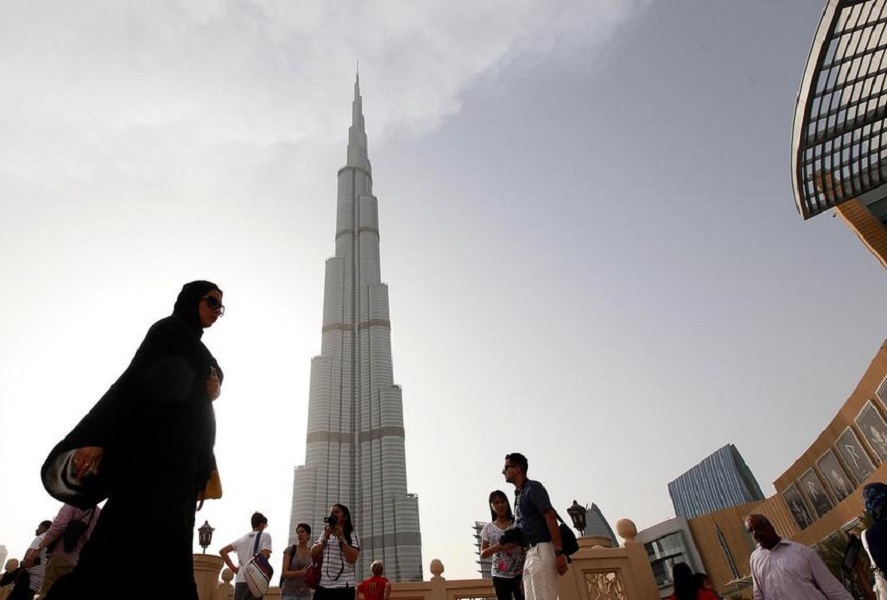Tourism Year in review: Dubai still on track to attract 20 million visitors by 2020
By Aliheydar_Rzayev Sunday, 31 December 2017 3:27 AM

The National -- Issam Kazim, chief executive of Dubai Corporation for Tourism and Commerce Marking (DCTCM) talks about prospects for the industry and the department’s efforts to woo more tourists to the emirate.
How does DTCM plan to boost visitors to 20 million by 2020?
The emirate has made steady progress towards achieving the Tourism Vision of 20 million visitors per year by 2020, doubling the number welcomed in 2012. All sectors of government are working together to help us achieve this; positive changes in visa regulations for countries such as Russia and China, and the World Economic Forum ranking the UAE as the second-safest country in the world, all add to our appeal as a leading global tourism destination.
Mega-developments set to dominate the 2020 skyline include Bluewaters Island, featuring Ain Dubai (Dubai Eye), Dubai Creek Harbour with its observation tower, set to become the tallest building in the world.
Cruise tourism is also playing a significant role in positioning Dubai as a must-visit destination, adding yet another attractive element to the city’s proposition. We had a very successful season in 2016-17, with over 625,000 cruise tourists visiting the city, via a total of 157 ship calls. This reflects an increase of 15 per cent and 18 per cent, respectively, when compared to the previous season, and we look forward to another successful season this year, building towards our target of receiving one million cruise passengers in 2020.
The expanded connectivity provided by Dubai Airports and airlines such as Emirates and flydubai also means that Dubai is easily accessible from all corners of the globe. Globally, we are seeing travellers opt for multi-destination holidays, and Dubai as an aviation hub is in an ideal position to act as a launch pad into the wider Middle Eastern, South Asian and South American destinations.
One of Dubai’s core focuses has been on positioning the city as the world’s leading family destination, which is representative in the fact that families and couples now make up more than half of all travellers visiting the city. Tailored events, attractions and experiences such as Dubai Parks and Resorts, IMG Worlds of Adventure and the newly-launched Dubai Safari Park have all been implemented to enhance Dubai’s global appeal among families and experience seekers.
Another focus for us is highlighting the heritage and culture that is unique to the city, through Dubai Historic District project, which is currently underway and aims to enhance the visitor experience in Dubai’s oldest neighbourhoods of Al Fahidi, Shindagha, Bur Dubai and Deira. More modern landmarks such as the recently opened Dubai Opera and Etihad Museum, are also helping establish Dubai as a cultural hub.
Which geographies will contribute to this growth?
Our marketing strategy for Dubai also ensures we attract visitors from across the globe and that there is no over-reliance on a single market. This ensures flexibility, and protection from macro-economic conditions that could have an impact on visitor numbers from a particular market.
Traditional core markets spanning the GCC, UK and Germany are continuing to grow, and they deliver over 40 per cent of tourism traffic to Dubai.
India is now Dubai’s top source market; in the first quarter of 2017, it became the first-ever market to record nearly 580,000 visitors in any one quarter, with a massive 23 per cent growth in arrivals between January and March. In March 2017, the UAE Cabinet also approved a decision to grant visas on arrival to Indian passport holders with either a valid US visa or a green card, which further boosted visitor numbers; from January to September almost 1.5 million Indian tourists visited Dubai, a year-on-year increase of 20 per cent. Also, in mid-September, it was confirmed that Indian citizens with UK or EU residencies would be granted a visa on arrival, something we are confident will contribute to further growth in the number of Indian visitors to Dubai.
Which new regions is DTCM targeting, how and why?
Russia and China are two of our fastest-growing source markets. January’s easing of visa regulations, allowing visitors from both these countries to apply for visas on arrival, has had extremely positive impact on tourist numbers throughout 2017. We have seen year-on-year increases of 43 per cent for Chinese tourists and an unprecedented 95 per cent for Russian tourists visiting the city.
There are several markets that we have identified as having high growth potential, including a number of emerging markets, and our goal is to tap into these. Growth markets we are targeting include countries such as Nigeria, South Africa, Malaysia and Indonesia. We will also continue to work in partnership with the General Directorate of Residency and Foreigners Affairs to update visa regulations for our source markets, to ensure Dubai continues to grow as a global tourism destination of choice in markets around the world.
What kind of hotels is needed to cater to the 20 million visitors?
The quality and high standards of Dubai’s hotels are a defining characteristic of the city’s tourism offering, and destination’s overall attractiveness to visitors from around the world. All leading international hotel chains have a strong presence in Dubai, and are adapting to cater to the diverse profiles of travellers to the city.
Dubai currently has more than 106,000 rooms across its expanding hotel and hotel apartment inventory. This increase has been planned to ensure that Dubai’s hotels can accommodate the influx of visitors and group travellers to Dubai, especially, in the lead up to and during Expo 2020.
This increase in hotel rooms also directly contributes to Dubai’s ongoing strategy to diversify the industry and to ensure there are a range of options available at different price points. The new mid-market and luxury hospitality offerings will appeal to all visitor segments and budgets.




























Add new comment